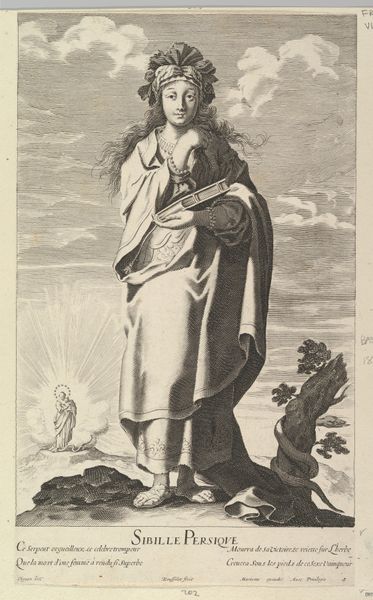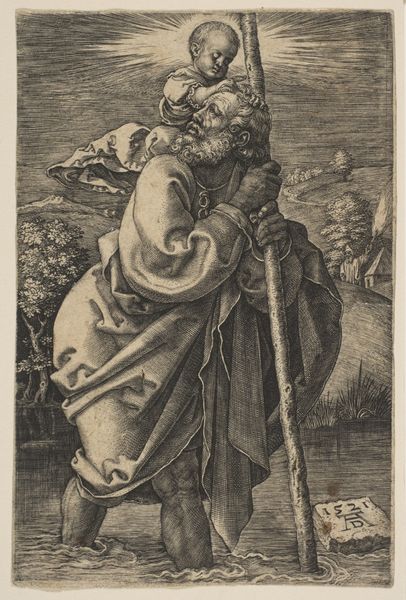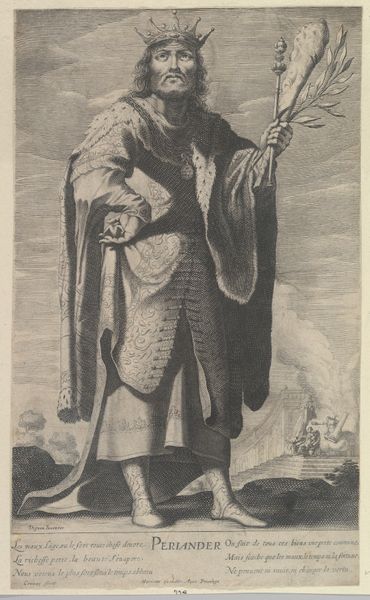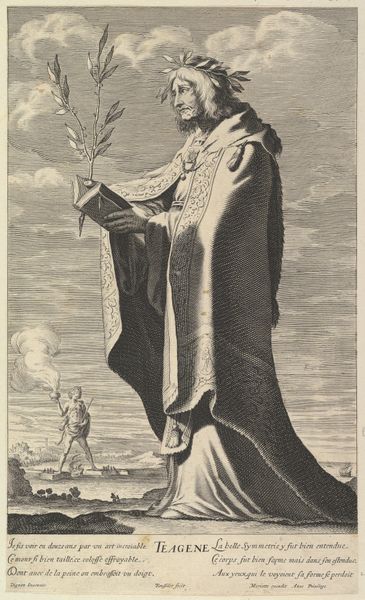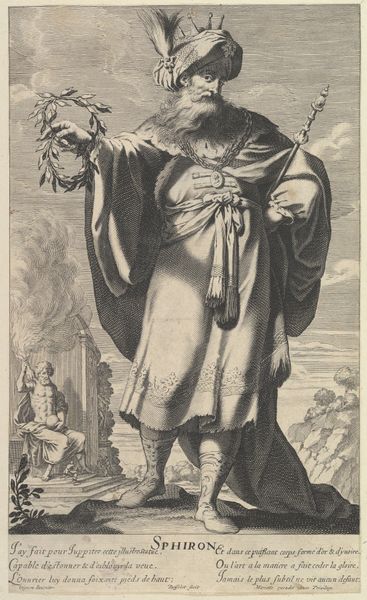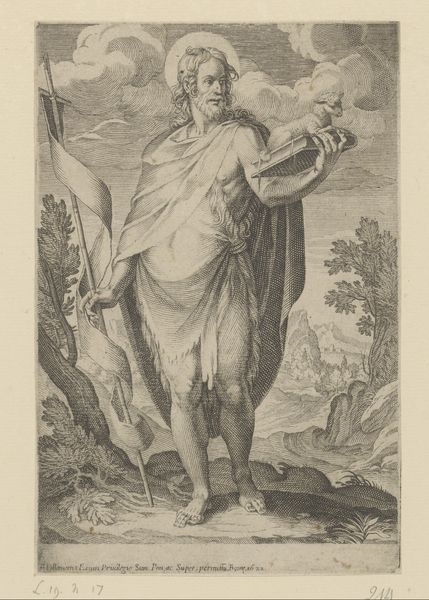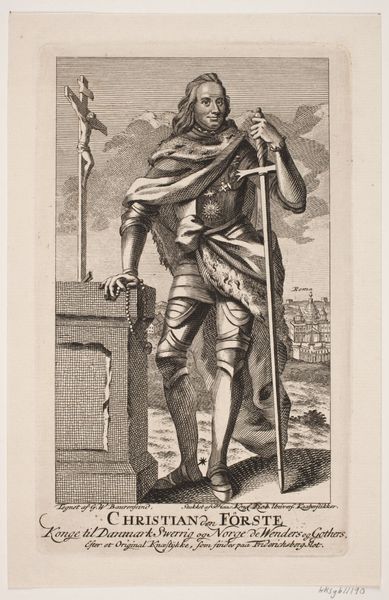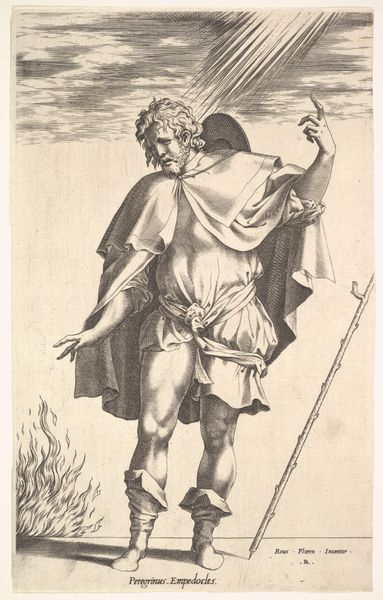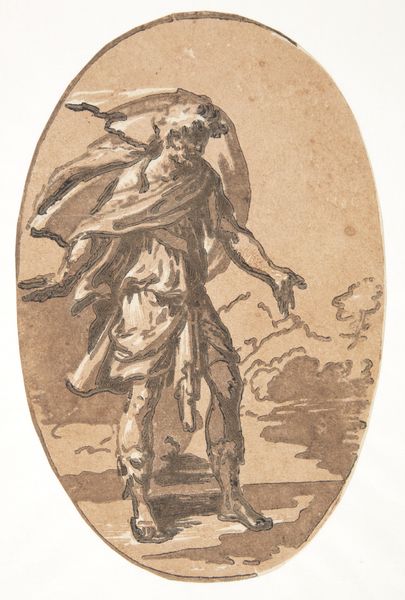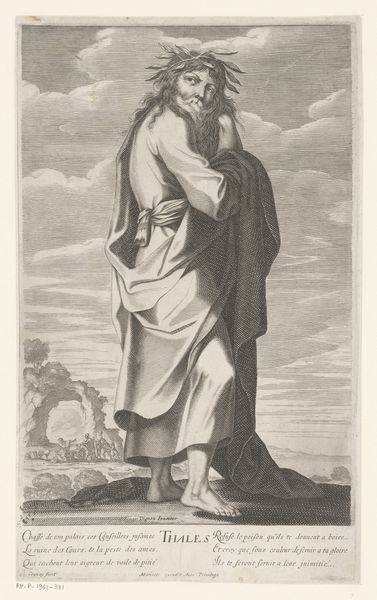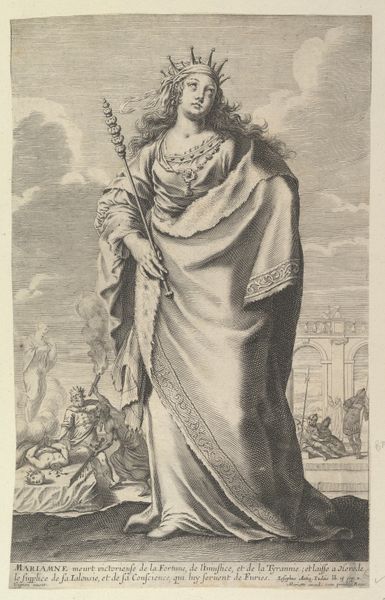
drawing, print, engraving
#
portrait
#
drawing
#
baroque
# print
#
old engraving style
#
men
#
portrait drawing
#
engraving
Dimensions: sheet: 14 x 8 3/8 in. (35.5 x 21.3 cm)
Copyright: Public Domain
Curator: Gilles Rousselet created this engraving, "Ptolémée," sometime between 1634 and 1645. It's currently housed at the Metropolitan Museum of Art. What’s your first take? Editor: Austere and a bit unsettling, really. The sharp lines create a strong sense of definition, but the subject's gaze is… intense. It's an interesting blend of power and vulnerability, presented at quite a dramatic scale, towering above that rather busy harbour scene in the distance. Curator: Right. Rousselet’s decision to depict Ptolemy in full military garb certainly projects an image of strength and authority, further enhanced by his elevated position overlooking the lighthouse of Alexandria. Yet, you also notice that he is wearing a crown reminiscent of sun rays, his attributes combine the power of the state and divinity in one man. Editor: The engraving technique also plays a huge role in establishing that mood. Look at the layering and cross-hatching! It really emphasizes the texture of the fabric and the musculature of Ptolemy's legs. Curator: Absolutely. Consider the psychological weight embedded in the symbolism, as well. The lighthouse, for instance, serves as a beacon of enlightenment and hope, alluding to Ptolemy's wisdom and guidance as a ruler. Editor: Yes, the contrast between light and shadow is striking and the balance between textual precision and atmospheric background elements really enhances its semiotic charge, creating an intense dialogue between its constitutive elements and ultimately revealing what’s hidden or just partially visible behind and within its central subject. The crown and lion skin over the shoulders, what’s the deal there? Curator: These attributes are an appropriation of Heracles’, or Hercules’, classical iconography. The lion skin shows his triumph over wilderness, which becomes interpreted as triumph over the self and attainment of knowledge through rigorous tests. Editor: Ah, okay. Makes the somewhat troubled gaze a little clearer. It is an incredibly dense visual argument, a fascinating work to unpack. Curator: Indeed, this Baroque print encapsulates an entire worldview, layered with symbols. Delving into it, you get the echoes of cultural memory, a continuity of knowledge rendered visible. Editor: Ultimately a stark reminder that formal qualities aren’t just decorative but fundamentally linked to deeper semantic and psychological layers. Thanks!
Comments
No comments
Be the first to comment and join the conversation on the ultimate creative platform.

